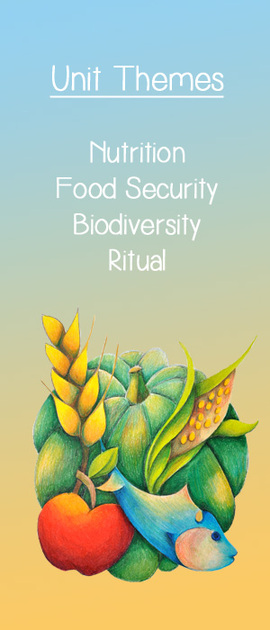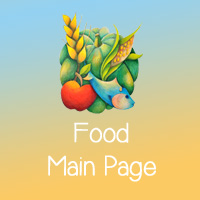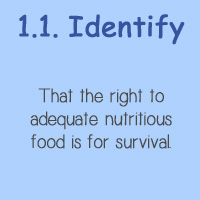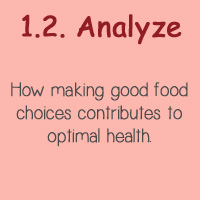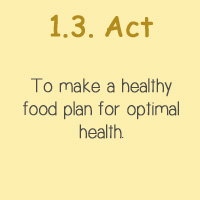Classroom Learning Activities
|
1. Healthy Foods = Healthy Body
In this activity children expand upon the knowledge they gained in the first sub-unit and analyze which foods contribute to a healthy body, and which foods might cause harm and disease. View the movie "Hunger isn't just a stomach thing" and list all ways the body uses the food consumed by an individual:
|
Hunger isn't just a stomach thing
World Vision |
|
2. Super Size Me - Making poor food choices:
Movie Synopsis:
Why are Americans so fat? Two words: fast food. What would happen if you ate nothing but fast food for an entire month? Filmmaker Morgan Spurlock does just that and embarks on the most perilous journey of his life. The rules? For 30 days he can't eat or drink anything that isn't on McDonald's menu; he must wolf three squares a day; he must consume everything on the menu at least once and supersize his meal if asked. Spurlock treks across the country interviewing a host of experts on fast food and an equal number of regular folk while chowing down at the Golden Arches. Spurlock's gruelling drive-through diet spirals him into a physical and emotional metamorphosis that will make you think twice about picking up another Big Mac. - Written by Sujit R. Varma for IMDb There are multiple resources for educators to use on the Internet. Just google Super Size Me Teaching Resources. One particular resource that was developed by the Ontario Society of Nutrition Professionals in Public Health is highly recommended and can be found here. It identifies some healthy eating objectives that relate to this sub-unit that include:
|
Super Size Me (2004)
While examining the influence of the fast food industry, Morgan Spurlock personally explores the consequences on his health of a diet of solely McDonald's food for one month.
|
Relevant Convention Articles
Article 6
1. States Parties recognize that every child has the inherent right to life.
2. States Parties shall ensure to the maximum extent possible the survival and development of the child.
Article 24
1. States Parties recognize the right of the child to the enjoyment of the highest attainable standard of health and to facilities for the treatment of illness and rehabilitation of health. States Parties shall strive to ensure that no child is deprived of his or her right of access to such health care services.
2. States Parties shall pursue full implementation of this right and, in particular, shall take appropriate measures:
(a) To diminish infant and child mortality;
(b) To ensure the provision of necessary medical assistance and health care to all children with emphasis on the development of primary health care;
(c) To combat disease and malnutrition, including within the framework of primary health care, through, inter alia, the application of readily available technology and through the provision of adequate nutritious foods and clean drinking-water, taking into consideration the dangers and risks of environmental pollution;
(d) To ensure appropriate pre-natal and post-natal health care for mothers;
(e) To ensure that all segments of society, in particular parents and children, are informed, have access to education and are supported in the use of basic knowledge of child health and nutrition, the advantages of breastfeeding, hygiene and environmental sanitation and the prevention of accidents;
(f) To develop preventive health care, guidance for parents and family planning education and services.
3. States Parties shall take all effective and appropriate measures with a view to abolishing traditional practices prejudicial to the health of children.
4. States Parties undertake to promote and encourage international co-operation with a view to achieving progressively the full realization of the right recognized in the present article. In this regard, particular account shall be taken of the needs of developing countries.
1. States Parties recognize that every child has the inherent right to life.
2. States Parties shall ensure to the maximum extent possible the survival and development of the child.
Article 24
1. States Parties recognize the right of the child to the enjoyment of the highest attainable standard of health and to facilities for the treatment of illness and rehabilitation of health. States Parties shall strive to ensure that no child is deprived of his or her right of access to such health care services.
2. States Parties shall pursue full implementation of this right and, in particular, shall take appropriate measures:
(a) To diminish infant and child mortality;
(b) To ensure the provision of necessary medical assistance and health care to all children with emphasis on the development of primary health care;
(c) To combat disease and malnutrition, including within the framework of primary health care, through, inter alia, the application of readily available technology and through the provision of adequate nutritious foods and clean drinking-water, taking into consideration the dangers and risks of environmental pollution;
(d) To ensure appropriate pre-natal and post-natal health care for mothers;
(e) To ensure that all segments of society, in particular parents and children, are informed, have access to education and are supported in the use of basic knowledge of child health and nutrition, the advantages of breastfeeding, hygiene and environmental sanitation and the prevention of accidents;
(f) To develop preventive health care, guidance for parents and family planning education and services.
3. States Parties shall take all effective and appropriate measures with a view to abolishing traditional practices prejudicial to the health of children.
4. States Parties undertake to promote and encourage international co-operation with a view to achieving progressively the full realization of the right recognized in the present article. In this regard, particular account shall be taken of the needs of developing countries.
Online Resources and References
Ontario Society of Nutrition Professionals in Public Health - Super Size Me Discussion Guide for Educators
Super Size Me - Fast food facts from the official website
Super Size Me Official Website
World Vision
Super Size Me - Fast food facts from the official website
Super Size Me Official Website
World Vision
